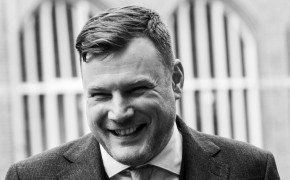Reinstatement of former river and harbour to reach a wide range of different objectives concerning economy, climate change, quality of life, water/heritage.
Harbour and river disappeared in the 40ties and 60ties for circulation and parking facilities. In the 90ties a plan was made to reopen the water course, with the following intentions to:
improve economic development of the inner city, make a liaison between inner city and vulnerable areas across, meet the challenges of climate change (overheating), create an ecological zone through the inner city from south to north, give meaning to the relation between the adjacent heritage and water, improve conditions for also residential functions in the inner city and improve conditions for tourism and recreation.
In 2007 the new harbour was opened, in 2008 the new river. 1/3 of the course of the water is back in town now. 1/3 is still to go. This last phase will be done in combination with a new city park, with a lot of attention to the greenification of the normally mineralised quays. This is also a European challenge in the framework of Urban Innovative Actions (see: www.uia-initiative.eu search for Greenquays Breda).
Results are considerable. About 200 million is already invested in real estate along the new river, new investments are on the way to realisation. The restoration led to about 15 % of increase of spendings and about 300 extra jobs.
Main stakeholders and beneficiaries are: inhabitants, water management board, investors and developers, owners and shopkeepers in the inner city, leisure and tourism organisations
and heritage organisations.
Resources needed
Total public investment was € 29,5 million. The design for the last phase is ready, and needs an extra amount of between 25 and 30 million. Private investors invested about 200 million, the upcoming water related investments will exceed this amount. The city is responsible for design and engineering
Evidence of success
The first two phases (harbour and river) were largely appreciated by the population, and are an example for a number of European Cities, that you can use the force of water for inner city regeneration. The relations in the public domain, especially on the topic of water and heritage, are restored and renewed. Economic effects are considerable, and the water is a trigger for private investments in the inner city. And it is a good example how you can work on climate change in a dense urban tissue.
Difficulties encountered
Big challenges were the collection of the funding, and how to convince the entrepreneurs of the inner city that this intervention would be beneficial for them (e.g. harbour instead of underground parking). It took some time to engage the regional water management board in inner city challenges.
Potential for learning or transfer
Process: it is vital to engage stakeholders in an early stage of (re)development, and to give them a role in research, programming and design process; key element is engagement of other authorities (province, water board); connect the challenge to the story of the city, on a strategic, tactical and operational level;create an atmosphere around the project of Soul (spirit of the project), Trust (we rely on each other), Quality (we go for the best), Theater (stand together on the podium) and Courage (you are stronger when you do it together)
Content: removing water courses is easier than to reinstate them, there are all kind of technical underground challenges; invest in flexibility (e.g. Breda prepared the quays and bridges for deeper water on the long term); experiment to combine the greenification of the city with the “bluefication”; combine the “Ecotech” and “Ecotouch” approach in measures for climate change
Please login to see the expert opinion of this good practice.
Tags: Climate change, Heritage, Rivers, Water








